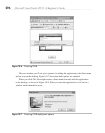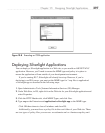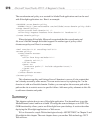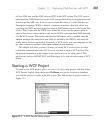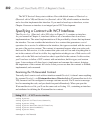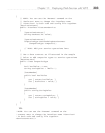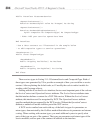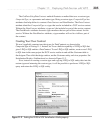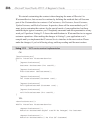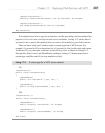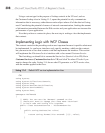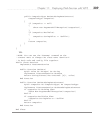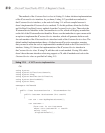
304 Microsoft Visual Studio 2010: A Beginner’s Guide
Public Interface ICustomerService
<OperationContract()>
Function GetData(ByVal value As Integer) As String
<OperationContract()>
Function GetDataUsingDataContract(
ByVal composite As CompositeType) As CompositeType
' TODO: Add your service operations here
End Interface
' Use a data contract as illustrated in the sample below
' to add composite types to service operations
<DataContract()>
Public Class CompositeType
<DataMember()>
Public Property BoolValue() As Boolean
<DataMember()>
Public Property StringValue() As String
End Class
There are two types in Listing 11-1: ICustomerService and CompositeType. Both of
these types were generated by VS to provide an example of how you can define a service
contract. After explaining the default code, we’ll modify the code to make it usable for
working with Customer objects.
Starting with the ICustomerService interface, the two most important parts of the code are
the ServiceContract and OperationContract attributes. The ServiceContract attribute states
that this interface defines a contract for a WCF Web service. Without the ServiceContract
attribute, this interface won’t be recognized by WCF. The OperationContract attribute
specifies methods that are exposed by the WCF service. Without the OperationContract
attribute, a method will not be visible as part of the WCF service.
A WCF service method can work with any of the built-in types for parameters or
return types, demonstrated by the GetData method that takes an int parameter and returns
a string. When working with custom types, you need additional syntax to specify what
parts of the type are part of the contract. The types are parameters and return types of the
service methods, and are part of the contract in addition to the interface.



